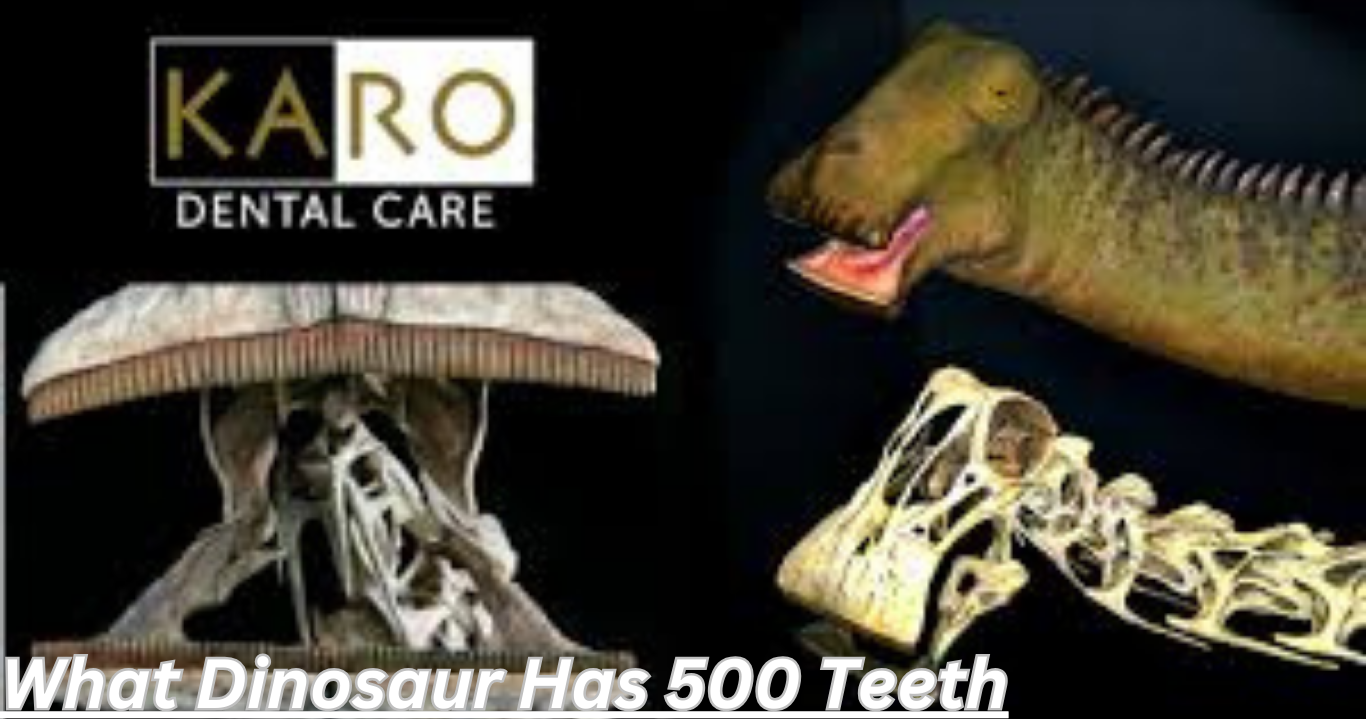Discover the fascinating world of dinosaurs, where giants roamed the Earth millions of years ago. Among these remarkable creatures is a unique herbivore known as Nigersaurus. This dinosaur stands out not just for its size but also for an extraordinary feature that leaves paleontologists and enthusiasts alike in awe: it had 500 teeth! If you’ve ever been curious about what dinosaur has 500 teeth, then you’re in the right place. Let’s dive into this ultimate guide to Nigersaurus and uncover what makes this ancient reptile so intriguing. From its physical characteristics to its feeding habits, there’s plenty to explore about this prehistoric marvel.
Physical Characteristics of Nigersaurus
Nigersaurus was an intriguing dinosaur that roamed the earth during the middle Jurassic period. Its most striking feature is its long, broad snout, giving it a unique appearance among sauropods.
This herbivore reached lengths of about 30 feet. Its lightweight build allowed for graceful movements despite its size.
The skeleton included a series of elongated vertebrae that contributed to its distinct shape. Nigersaurus had strong and sturdy limbs, ideal for supporting its massive body while grazing on vegetation.
What truly sets it apart is the arrangement of its teeth—up to 500! These specialized teeth were designed for efficiently stripping leaves and soft plants from low-lying vegetation.
With this remarkable adaptation, Nigersaurus showcases how evolution shapes physical traits in response to dietary needs and habitat conditions.
Unique Feature: What Dinosaur Has 500 Teeth
The Nigersaurus is renowned for its astonishing dental arrangement. With around 500 teeth, it stands out among dinosaurs. This impressive count isn’t just a random fact; these teeth were perfectly adapted for its specialized diet.
Unlike many other herbivorous dinosaurs, the Nigersaurus had flat teeth ideal for grazing on low-lying vegetation. Imagine a creature designed to sweep through the ferns and shrubs, munching with efficiency!
What’s more fascinating? Its teeth continuously replaced themselves throughout its life. As old ones wore down from constant use, new ones grew in their place—almost like nature’s own assembly line.
This unique feature not only sets Nigersaurus apart but also highlights how evolution fine-tuned this dinosaur for survival in its environment. Each tooth played a critical role in sculpting its dietary habits and ultimately shaping ecosystems during the Late Jurassic period.
Diet and Feeding Habits
Nigersaurus was a herbivorous dinosaur, primarily feeding on low-lying vegetation. Its unique teeth adaptation played a crucial role in its diet.
With 500 specialized teeth, Nigersaurus could effectively munch on soft plants and foliage close to the ground. This dental structure allowed it to extract nutrients from fibrous material with remarkable efficiency.
Unlike many other dinosaurs that grazed higher branches or towering trees, Nigersaurus preferred the lush greenery closer to its habitat’s surface. It likely roamed through ancient river valleys and floodplains where such vegetation thrived.
The wide mouth of this dinosaur facilitated quick grazing movements. By sweeping across the ground, it consumed large amounts of plant matter without expending too much energy.
This distinctive feeding strategy made Nigersaurus well-suited for its environment during the late Jurassic period. The evolutionary design not only ensured survival but also showcased nature’s ingenuity in adapting to diverse diets.
Habitat and Fossil Discoveries
Nigersaurus roamed the lush landscapes of what is now Niger, Africa. During the Late Jurassic period, around 115 million years ago, this region was rich in vegetation and water sources.
Fossil discoveries have primarily occurred in the Elrhaz Formation. Here, paleontologists unearthed remarkable remains that paint a vivid picture of Nigersaurus’ environment. The fossilized bones indicate it thrived in areas with abundant plant life.
The geological context reveals a dynamic ecosystem filled with diverse flora and fauna. This habitat allowed Nigersaurus to flourish among other dinosaurs and prehistoric creatures.
Excavations have yielded not just teeth but also complete skeletons. These finds are crucial for understanding its biology and behavior. As researchers continue their work, new insights into this fascinating dinosaur keep emerging from beneath the dusty sands of time.
Theories on the Evolution of Nigersaurus’ Teeth
The evolution of Nigersaurus’ teeth has sparked considerable interest among paleontologists. One theory suggests that its unique dental arrangement was driven by a specific diet. With 500 slender teeth, it may have been perfectly adapted to grazing on soft vegetation.
Another perspective posits that these numerous teeth were an evolutionary adaptation for coping with wear and tear. Given the abrasive nature of the plants it likely consumed, having multiple replacements allowed it to maintain efficiency in feeding.
Some experts also consider environmental factors influencing this development. As habitats changed over millions of years, so did dietary preferences and adaptations like those seen in Nigersaurus.
These hypotheses showcase how interconnected anatomy and ecology can be in the evolutionary process. Understanding these theories sheds light not just on Nigersaurus but also on broader patterns in dinosaur evolution.
Preservation and Study of Nigersaurus
The study of Nigersaurus continues to evolve as new techniques emerge in paleontology. Fossils discovered in the early 2000s have provided a wealth of information about this remarkable What Dinosaur Has 500 Teeth.
Scientists utilize advanced imaging technologies, such as CT scans, to analyze fossilized remains without causing damage. This non-invasive approach allows researchers to uncover details about bone structure and growth patterns.
Preservation methods play a crucial role in safeguarding these ancient specimens. Careful excavation and stabilization processes ensure that fossils are not lost to erosion or degradation over time.
Collaborative efforts among museums and universities enhance research opportunities. By pooling resources, experts can share insights and conduct comprehensive studies on Nigersaurus’ unique features.
As more fossils come to light, our understanding of this fascinating herbivore deepens. Each discovery adds another layer to the intricate story of life during the age of dinosaurs.
Popular Culture References
Nigersaurus has made its mark in popular culture, captivating audiences with its unique charm. Documentaries have featured this remarkable dinosaur, showcasing its unusual anatomy and intriguing lifestyle.
Children’s books often highlight Nigersaurus due to its distinctive appearance. Its long neck and abundant teeth spark curiosity among young readers eager to learn about prehistoric life.
Animated shows occasionally include this herbivorous giant as a quirky character. Its playful representation helps demystify dinosaurs for a new generation while keeping the science accessible.
Video games also embrace Nigersaurus, allowing players to explore ancient environments alongside it. The appeal lies in both education and adventure, making learning fun through interactive experiences.
Artistic renditions of Nigersaurus grace museums and educational materials worldwide. Each rendition captures the imagination, ensuring that this fascinating creature remains a topic of conversation among enthusiasts and curious minds alike.
Conclusion
Nigersaurus is a fascinating creature that captures the imagination of both scientists and dinosaur enthusiasts alike. With its unique features, especially those remarkable 500 teeth, it stands out among other dinosaurs. These teeth were perfectly adapted for a specialized diet, allowing this herbivore to thrive in its environment.
As paleontologists continue to study Nigersaurus through fossil discoveries, we learn more about how these creatures lived millions of years ago. Their adaptations provide insight into the evolutionary process and highlight the diversity of life during the Mesozoic era.
Whether you’re drawn in by its quirky appearance or intrigued by its ecological role, Nigersaurus remains an important figure in paleontology. Its legacy continues to captivate imaginations and inspire further exploration into our planet’s prehistoric past.




